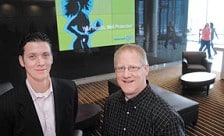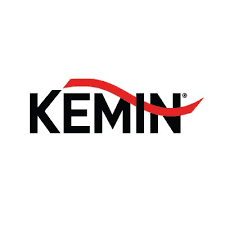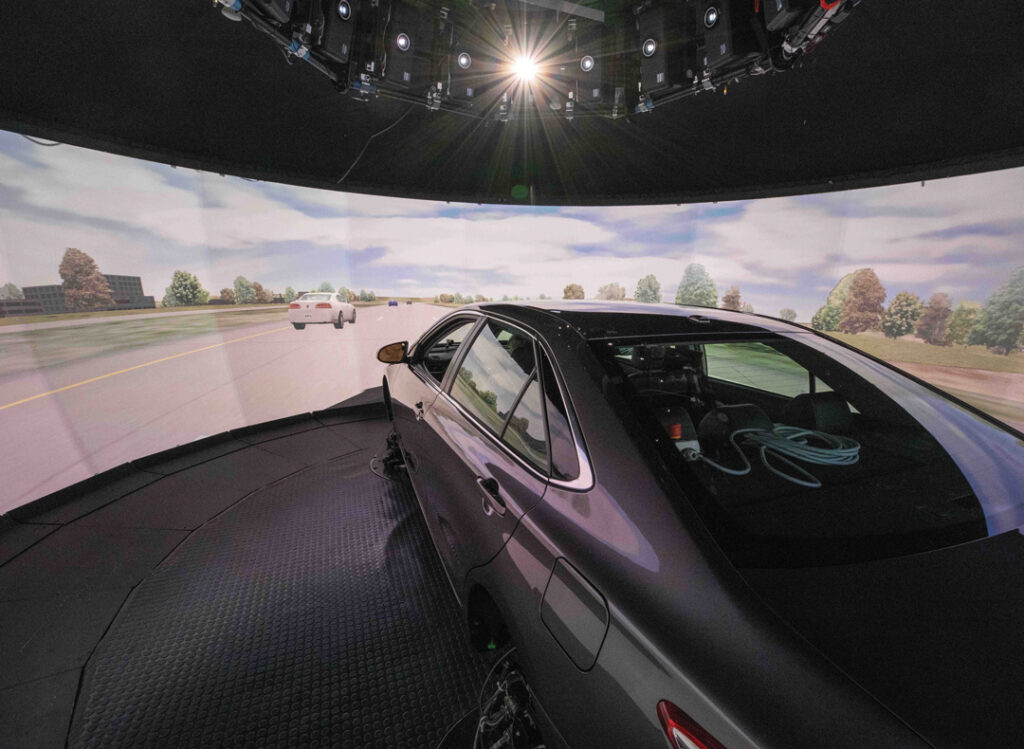High-tech gadgets, software improve efficiency at Wellmark

Wellmark Blue Cross and Blue Shield, which is putting the final touches on its 550,000-square-foot downtown office building, has incorporated a number of high-tech gadgets into the structure that are intended to help employees operate more efficiently.
Wellmark tapped a local company, Pratt Audio Visual & Video Corp., to install all of the audiovisual equipment in its new corporate campus at 1331 Grand Ave., the completion of which allowed Wellmark’s 1,600 employees to relocate from five leased office spaces to one central location.
Dozens of touch-screen display panels are featured throughout the five-story building. They allow employees to schedule meeting spaces and control meeting room amenities such as projectors and screens, DVD players, audio conferencing equipment, wireless microphones and lighting levels.
“The idea behind that is that you really don’t need training,” Tim Wright, an account executive with Pratt, said of the devices in the Wellmark building’s approximately 60 conference and training rooms. He noted that in some rooms, graphic user interfaces, also known as GUIs, even allow users to raise and lower the shades.
Michael Morlock, Wellmark’s director of information technology infrastructure, said a desire to be more consistent was a key factor in the insurer’s decision to incorporate new technologies. Such features include a room management system that allows supervisors to track maintenance schedules and see how often a particular room has been used.
The systems also help employees streamline day-to-day job functions, regardless of where they are in the building.
“If you’re presenting in a room down here, or if you’re going up to the board room to present, it has the same look and feel no matter where you are at in the building,” Morlock said. “From a user perspective, it’s very intuitive. It’s easy to go from a small room to a large room.”
Meeting rooms also include Citrix Systems Inc. ports that allow employees to access their digital desktops from anyplace they can establish an Internet connection.
“Rather than having everything local on a laptop, it’s housed on server farms,” Morlock said, referring to Citrix. “In our old buildings, we had about the same number of conference rooms, probably a few more. If I had 10 people in a meeting and I was doing a presentation, I’d print off maybe 20 copies of the presentation. Now people actually come to it and all they bring is their laptops, and they log into Citrix.”
According to Wellmark spokesman Rob Schweers, the insurer’s November 2010 move to the new building, combined with other newly developed procedures, helped the company save about $136,000 in paper, toner and maintenance costs last year.
“We’ve started changing the mindset and that culture to say we don’t need to waste this extra paper, we don’t need to print off 20 copies of everything,” Morlock said. “We’re seeing people be a little bit more collaborative than they were before.”
That focus on uniformity also helped Pratt expedite its delivery.
“From our standpoint, it made it really easy to integrate,” Wright said. “We basically did a standard template in our programming and just copied it over and over.”
“And if you have more functionality in a room, you just add another button or two, rather than redesigning the whole screen,” Morlock said.
However, piecing together the nearly 3,500 individual pieces of hardware that were necessary to make everything fit together properly was challenging, especially with ongoing advances in audio-visual technologies that are becoming more driven by software.
“By the time you design a project and specify the equipment, to the time you are actually ready to install, you go through a lot of model changes,” Wright said. “Hanging this stuff is easy. It’s all the other programming, software-wise, that takes a great deal of time. There were a lot of changes between conception and final integration.”
In January, Pratt completed its installation of a 62-inch-by-110-inch plasma display in Wellmark’s main lobby on the first floor. The company uses it to communicate with visitors.
The display includes nine screens manufactured by Orion Images Corp. and nine digital media players made by Richardson, Texas-based AMX LLC.
“The unique thing about these displays is that they don’t have a bezel,” Wright said. “So there is no frame around them. If there is no messaging on the display, you really can’t tell they are there. The glass is coated to the same color and texture as the blank displays.”
In addition, more than 20 Samsung 46-inch LCD televisions are positioned in employee break areas, including the cafeteria and the fitness center, allowing the company to quickly and constantly share internal communications.
The televisions, which include built-in processors that allow information to be sent over a Category 5 networking cable, are part of Wellmark’s Blue TV campaign. The sets also have traditional tuners and are wired for Mediacom cable.
Though he didn’t provide a breakdown of how much the audiovisual elements of Wellmark’s $194 million project cost, Schweers said incorporating these components now might help reduce the costs of future upgrades.
“It’s kind of hard to just put a number on it, because there is so much of the infrastructure that goes into it,” Wright said.
Wellmark, which last month was given approval by the Iowa Insurance Division to increase its base rate by 8.5 percent for the majority of Iowa individual market policyholders, has announced a goal to cut its annual operating expenses by 5 percent.
“What did we need to invest in this to be able to get at the efficiency goals that we have for moving into the building?” Schweers asked.
“The thought was we would do it up front so that we are not going back and trying to add things two years or three years down the road,” Morlock said.











